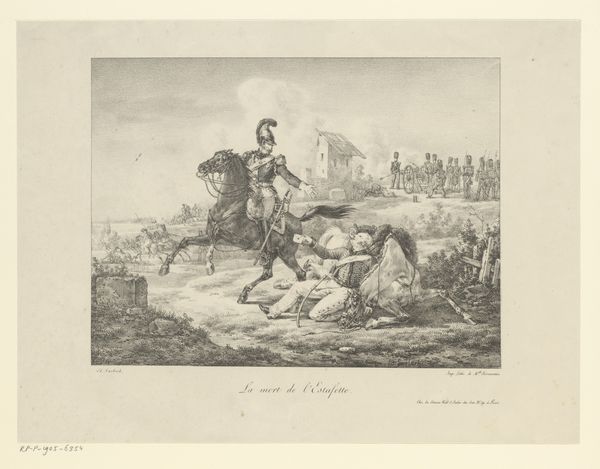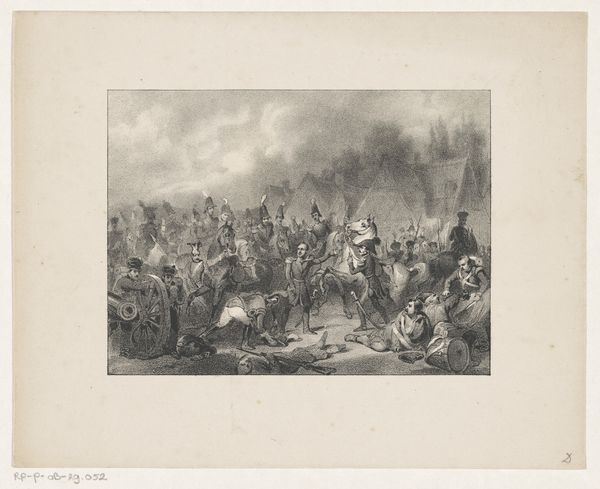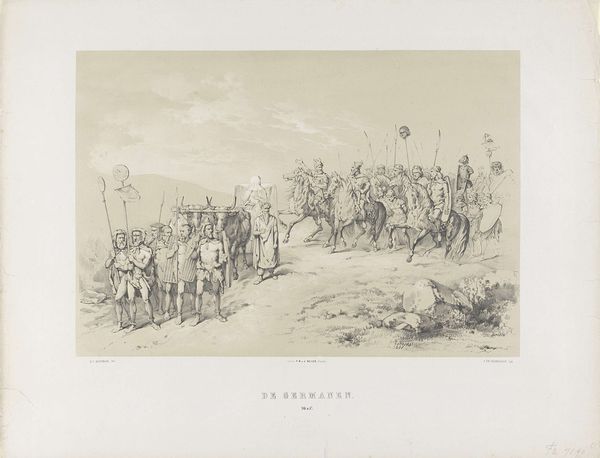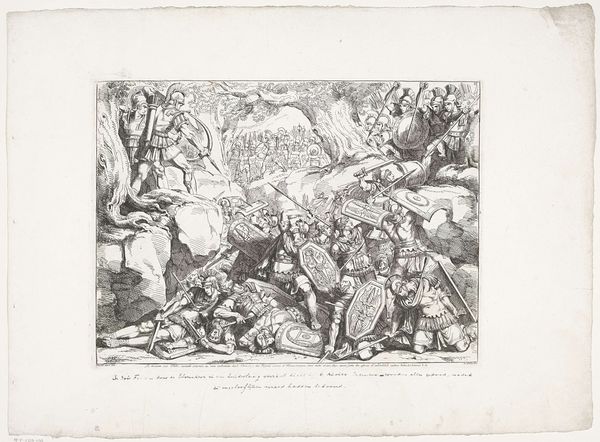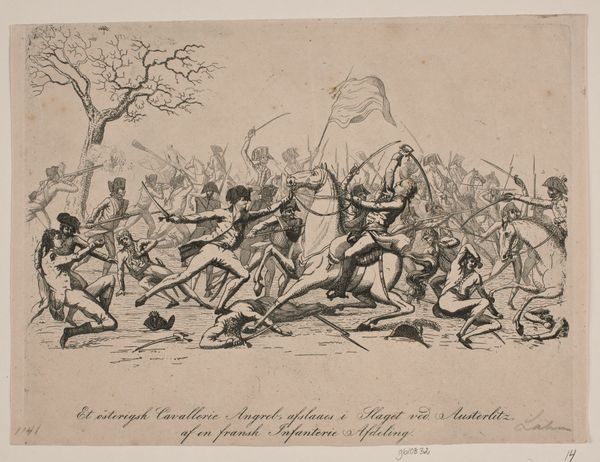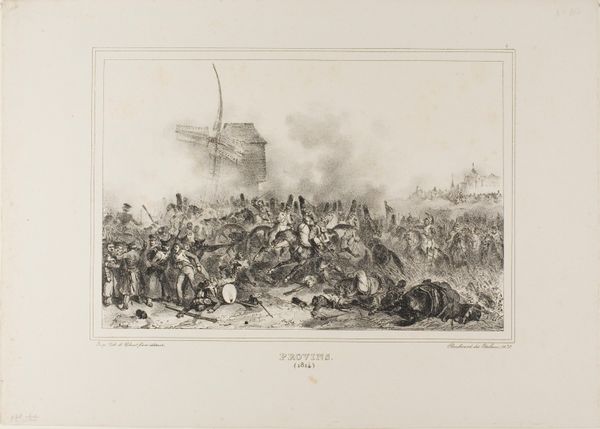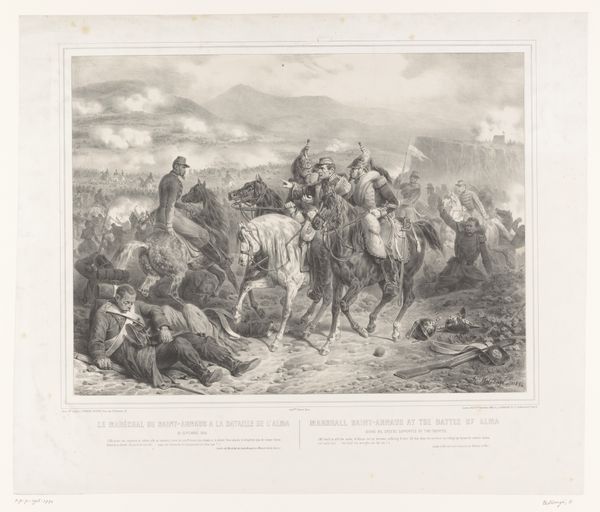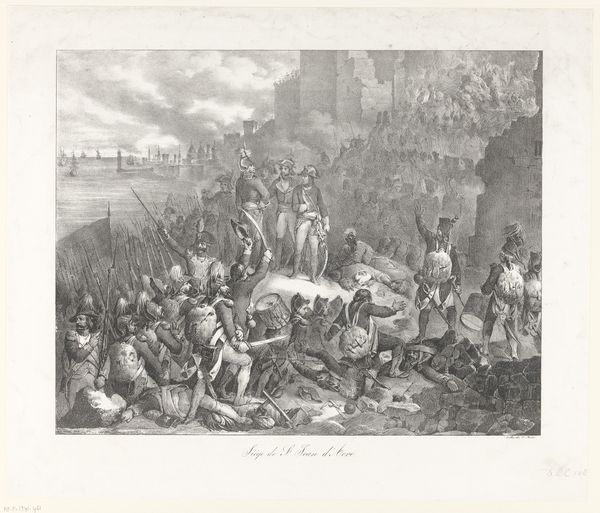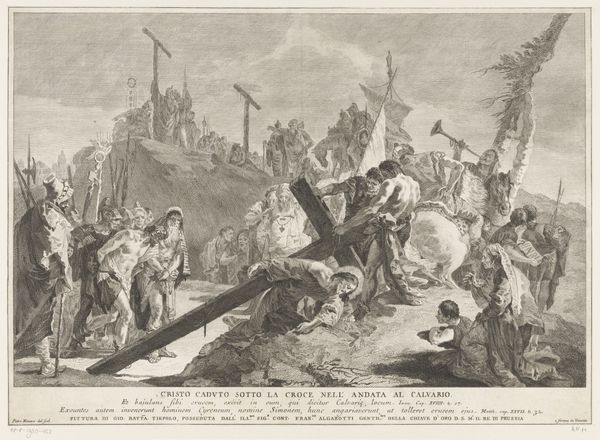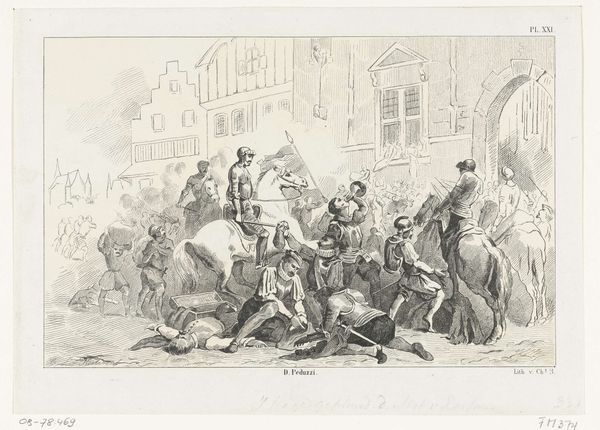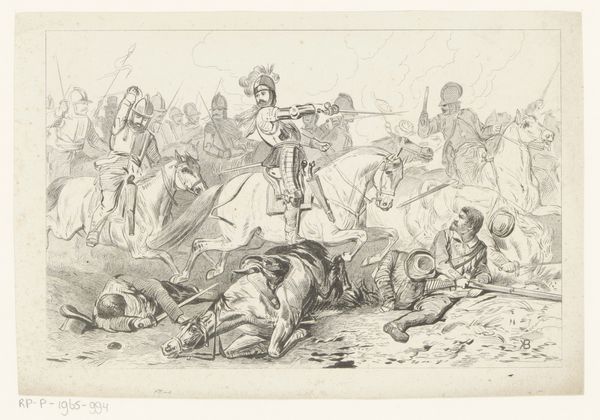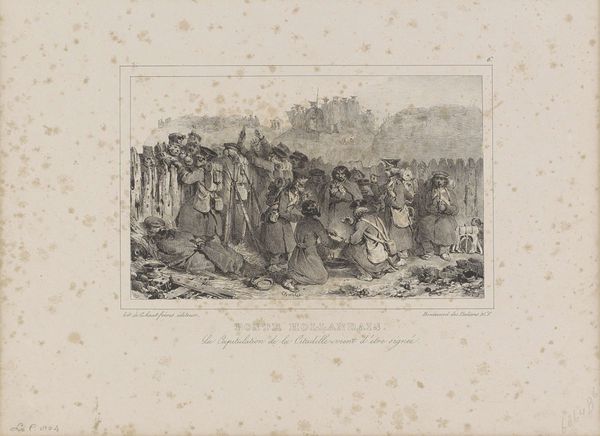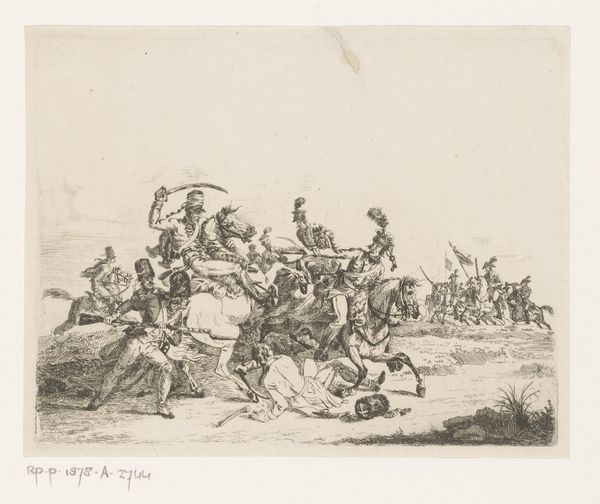
Albrecht en Isabella bezoeken te paard de verwoeste stad Oostende, 1604 1843
0:00
0:00
edouardhamman
Rijksmuseum
etching
#
narrative-art
#
etching
#
etching
#
romanticism
#
history-painting
Dimensions: height 245 mm, width 310 mm
Copyright: Rijks Museum: Open Domain
Curator: Here we have Edouard Hamman’s etching, created in 1843, titled "Albrecht and Isabella Visit the Ruined City of Ostend, 1604." It’s quite a detailed work for the etching medium. Editor: The scene is rather grim. What I see immediately is the aftermath, a palpable sense of destruction; bodies strewn on the ground and the almost imperious presence of Albrecht and Isabella on horseback. The labor involved in its creation is also obvious: intricate lines bring out such vivid storytelling. Curator: Hamman produced this during the Romantic period, reflecting a fascination with dramatic historical events, such as this visit of Albrecht and Isabella to the war-torn city of Ostend. He's focusing here on the rulers of the Habsburg Netherlands assessing the result of the siege of Ostend, a key moment in the Eighty Years' War. Editor: So the work is less about celebration and more about observation? Are we supposed to look at the cost to Ostend? You know, etched lines in a print are themselves a record of a direct, physical process. Every mark conveys labor. And labor—particularly under duress like in war—speaks to power dynamics at play during times of conflict. How does the method interact with what it represents? Curator: It seems, yes, that Hamman intends to display this conflict. The Habsburgs here function, really, as observers who stand somewhat apart from the tangible consequences, elevated not only by horseback but by social standing and historical circumstance. He perhaps explores how power operates, situating the rulers in this theater of suffering, where their agency, or perceived agency, had enormous consequence. Editor: Do we see any political criticism in the detail? Curator: It’s difficult to ascertain definitively, but that dichotomy does expose uncomfortable relationships. By presenting Albrecht and Isabella almost clinically examining devastation, the work arguably raises questions about accountability. After all, what did victory actually cost here, especially from the perspective of those living it? It's vital to reflect how such moments reflect deeply entrenched political inequities that continue to this day. Editor: The making, in itself, embodies an engagement with tangible history. Thinking about it this way gives new perspectives. Curator: It highlights the artist’s capacity to engage with historical discourse by giving audiences, then and now, the space to analyze past and ongoing social complexities. Editor: The etching, in its raw materiality and illustrative capability, does ask us to reconsider traditional depictions of leadership and the act of remembering.
Comments
No comments
Be the first to comment and join the conversation on the ultimate creative platform.
